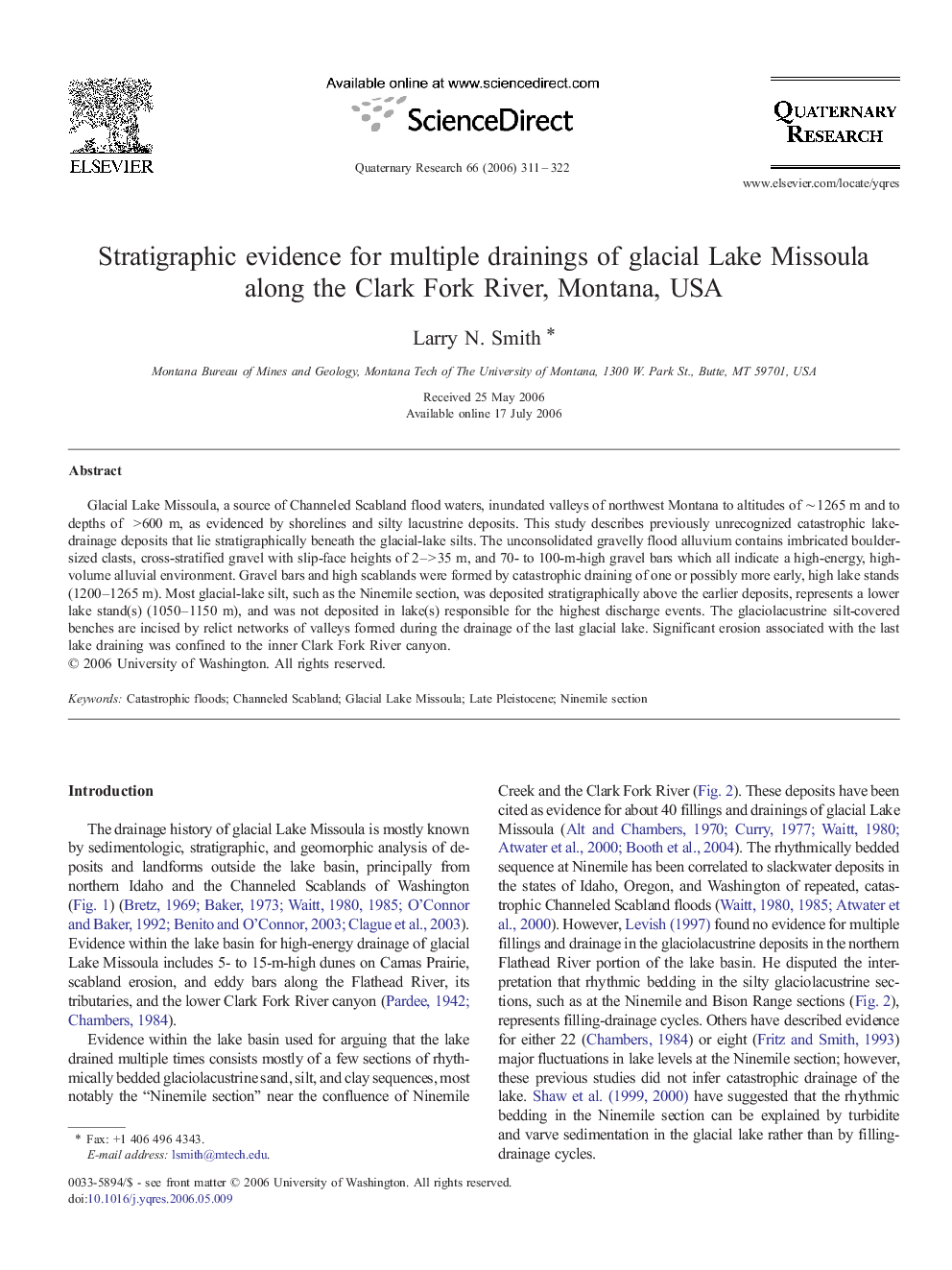| Article ID | Journal | Published Year | Pages | File Type |
|---|---|---|---|---|
| 1046141 | Quaternary Research | 2006 | 12 Pages |
Abstract
Glacial Lake Missoula, a source of Channeled Scabland flood waters, inundated valleys of northwest Montana to altitudes of â¼Â 1265 m and to depths of >600 m, as evidenced by shorelines and silty lacustrine deposits. This study describes previously unrecognized catastrophic lake-drainage deposits that lie stratigraphically beneath the glacial-lake silts. The unconsolidated gravelly flood alluvium contains imbricated boulder-sized clasts, cross-stratified gravel with slip-face heights of 2-> 35 m, and 70- to 100-m-high gravel bars which all indicate a high-energy, high-volume alluvial environment. Gravel bars and high scablands were formed by catastrophic draining of one or possibly more early, high lake stands (1200-1265 m). Most glacial-lake silt, such as the Ninemile section, was deposited stratigraphically above the earlier deposits, represents a lower lake stand(s) (1050-1150 m), and was not deposited in lake(s) responsible for the highest discharge events. The glaciolacustrine silt-covered benches are incised by relict networks of valleys formed during the drainage of the last glacial lake. Significant erosion associated with the last lake draining was confined to the inner Clark Fork River canyon.
Related Topics
Physical Sciences and Engineering
Earth and Planetary Sciences
Geology
Authors
Larry N. Smith,
